HTC One max vs Samsung Galaxy S4
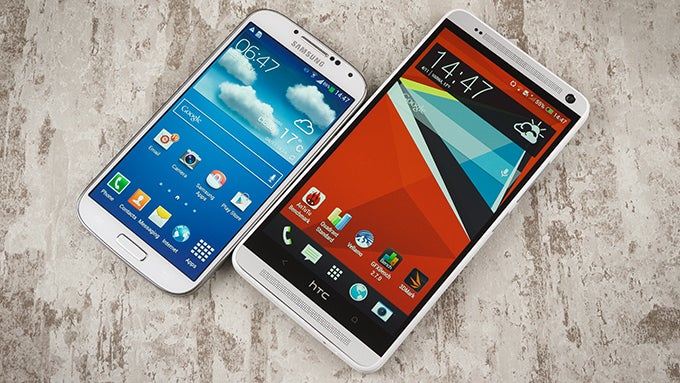
Introduction
Decisions, decisions, decisions – making the right one can be tough with all these great smartphones to select from. Anyone who's on the looks for a new handset is perfectly aware of that. And it gets even more difficult now that a new category of devices has emerged – the phablet class, which more and more manufacturers are now taking quite seriously. Should one stick to a smartphone, or dive into the unknown and give those phablets a try? Well, perhaps we can weigh in on that. Or at least when it comes to picking between the Samsung Galaxy S4, which is still one of the top Android handsets on the market, and the HTC One max – a high-end phablet based on the gorgeous HTC One. So without further ado, let's get this Android party started.
Design
What we have here is a case of two smartphones targeting different types of consumers. The HTC One max, equipped with its gigantic touchscreen, is for those who just can't get enough display real estate out of any regular-sized phone. And yes, it feels a lot like a small tablet in the hand, rather than something we'd call a phone – a huge plus for people who love watching videos and playing games on their mobile device. But due to its extreme proportions, the One max would most likely be ignored by a considerable fraction of potential buyers, dismissed as way too large and impossible to use with a single hand. The Samsung Galaxy S4 is quite different in that respect. Clearly, it is a lot more suitable for the mainstream consumer and thanks to its ergonomic shape, it fits well in the user's palm. What's more, the Galaxy S4 would fit in almost any pocket, while the One max is a bit tricky to carry around.
When it comes to looks and build materials, the HTC One max definitely has the upper hand. It is a premium handset with outstanding design, made of matte aluminum that feels great to the touch. Samsung, true to its traditions, has chosen to stick with glossy plastic for the outer shell of the Galaxy S4. The phone's design is definitely not bad, but it just can't make us go “wow” the way the One max can.
However, one thing that does make the Samsung Galaxy S4 stand out is that it comes in a variety of colors – seven of them, as of this article. These include black, white, blue, brown, purple, red, and pink (availability may vary from one market to another). The HTC One max, on the other hand, is currently available only in Glacial Silver.
What the HTC One max and the Samsung Galaxy S4 have in common is that they both have a removable back cover. Behind it are placed their micro SIM and microSD card slots. However, the Galaxy S4 has a removable battery as well, placed behind its back plate. The battery cell on the One max is off limits and cannot be swapped.
All the buttons on the Samsung Galaxy S4 can be reached effortlessly. On its sides we have the power and volume keys, exposed well and with good feedback. In the middle below the screen are placed the physical “home” key, as well as the capacitive “back” and “menu” keys. The power and volume keys on the HTC One max, placed on its right side, are flush and a tad difficult to feel because of that. Below its screen we have just two capacitive buttons for the “back” and “home” functions.
Before we continue, we have to mention that the HTC One max has a fingerprint scanner on its back – a perk that only a handful of other smartphones have to offer. Its purpose is to replace the user's lock screen PIN or pattern, but it can also be used to launch apps depending on which finger is scanned. Sadly, its implementation has not been executed optimally, as we shared with you in a recent article. That's why the absence of such on the Galaxy S4 isn't that big of a deal.
Display
What makes the HTC One max shine is the large, 5.9-inch touchscreen gracing its front. The panel is of the Super LCD 3 kind and has a resolution of 1080 by 1920 pixels (373 ppi). On the Samsung Galaxy S4 we have a smaller, yet still sufficiently large Super AMOLED display – measuring 5 inches in diagonal, it is of typical size for a high-end smartphone's screen. Its resolution is 1080 by 1920 pixels as well, resulting in a pixel density of 441 ppi. Both of these displays pack more pixels per inch than a human eye can detect from a typical usage's distance (about 12 inches). As a result, the level of detail they are capable of delivering is impressive and we see no pixelation whatsoever occurring on any of them. Anything from images to text looks clear, sharp, and detailed.
With the bright, vivid colors exhibited by its screen, the Samsung Galaxy S4 can easily grab one's attention. As the case is with all AMOLED panels, hues reproduced by the smartphone's display have a dose of extra saturation added to them, bringing photos, videos, and games to life. This peculiarity, however, has its downside. While these pumped-up colors do look spectacular, they can't be considered natural. Thankfully, Samsung has added multiple display modes in the Settings menu, allowing the user to bring color saturation to a much more neutral level. By default, colors on the HTC One max have a neutral tone, but they can't be regarded as perfectly accurate either. Whites, in particular, are slightly skewed towards the yellowish side.
Outdoor visibility might be an issue for those holding on to the Samsung Galaxy S4, and the mediocre brightness output of its screen is the root cause for that. On the bright side of things, the screen's surface has a very low reflectance ratio, which makes using the phone outdoors possible with a little effort. The screen on the HTC One max shines brightly and anything displayed on it is much easier to see even on a sunny day.
A trick that the Samsung Galaxy S4 has up its sleeve is the extra sensitivity added to its display. As a result, its touchscreen can be operated even if the user is wearing gloves. No such extras are present on the HTC One max.
Interface
Out of the box, the HTC One max runs Android 4.3 Jelly Bean, with a promise from HTC that a 4.4 KitKat update will be released by mid-December. On the Samsung Galaxy S4 we find Android 4.3 as well, yet currently, we aren't sure when exactly the handset will be treated to an update to KitKat.
Unsurprisingly, the Android builds loaded onto these two smartphones have undergone some serious modification. On the HTC One max we have the company's custom Sense 5.5 interface – it is simple, stylish, and quite good-looking as a whole. What's more, it is extremely consistent, meaning that all menus, UI elements, and native apps follow the same design principles and color schemes. When it comes to personalization, one has the freedom to add shortcuts and widgets to both their home and their lock screen. Those who are addicted to social networking, or simply love to be in the know, might like the HTC BlinkFeed feature. Basically, it acts as a home screen where up-to-date information from hundreds of online news sources is curated and mixed together with the user's social network feed. Thankfully, it can be switched off if not needed.
Samsung's approach to UI design is quite different. First of all, there's a bit more eye-candy found in TouchWiz UI, which we find loaded onto the Galaxy S4 – think transition effects, colorful icons and wallpapers, transparent UI elements, and the likes. And while the interface looks quite cartoonish in our opinion, we're sure that a great fraction of users won't have anything against that. Another peculiarity about TouchWiz is that it is loaded to the brim with extra features, some of which are found only on Galaxy smartphones. Most of them, such as S Translator, S Health, and the option to split the screen in half for two apps to run side by side, can be quite useful.
All in all, Sense and TouchWiz both have their strengths and weaknesses. And it is up to the user to decide which one they prefer – HTC's Sense 5.5 is for people who are into simpler, more elegant UIs, while TouchWiz in its latest form is for those who want a fully loaded handset, with goodies other phones likely won't have.
Processor and memory
Just like the HTC One, the One max has a Qualcomm Snapdragon 600 SoC ticking under the hood, with a quad-core Krait 300 CPU arrangement and a 1.7GHz maximum clock speed. Given the fact that the faster Snapdragon 800 is already powering a number of devices, we find it strange that HTC would stick to the weaker silicon for a handset of this caliber. The same Snapdragon 600 chip is outfitted inside the Samsung Galaxy S4 as well, or at least that is the case with the variant we are using for this comparison. That we don't mind since the Snapdragon 600 was the best Qualcomm had to offer at the time of the S4's launch. (Note that in select markets, the Galaxy S4 is sold with an Exynos 5 Octa 5410 instead.) However, Samsung has clocked the CPU higher, at 1.9GHz, which gives the Galaxy S4 the upper hand when it comes to raw power.
But despite the slight difference in CPU clock speed, both the HTC One max and the Samsung Galaxy S4 are, more or less, equally fast and responsive when performing every-day tasks – their UIs are rendered smoothly, with lags occurring only on some very rare occasions. As a matter of fact, the HTC One max is often speedier when we launch or switch between apps. Both smartphones perform well while playing heavy games and have no troubles running all of the newest titles at the Play Store.
With the HTC One max you get 16GB of storage, out of which 10.4GB are available to the user – not much, but not terrible either. This can be expanded with the help of a microSD card of up to 64GB, where photos, music, and even some apps' data can be stored. Alternatively, you can just wait for the launch of the upcoming 32GB model instead, should you require the extra space. The case with the Galaxy S4 is not much different – there are 16GB on board, with about 9.5GB of them user-available, and a microSD card slot making storage expansion possible. Again, one is free to get a 32GB model instead, and for those who find even that insufficient, a 64GB version can be found as well after a little digging online. Extra cloud storage is provided with both devices – 50 gigs on Dropbox for the Galaxy S4 and “up to” 65GB on Google Drive for the HTC One max.
Dialer and messaging
Launching the Phone app on the HTC One max brings forth a virtual keypad for dialing numbers and searching through contacts. A swipe to the side takes us to the contacts list, where we can quickly browse through them using a 2-finger swiping gesture. Call history, favorite contacts, and contact groups have their own tabs as well. What we like about HTC's Phone app is that specific contacts can be blocked and that it works with a pre-loaded widget listing a contacts group that we pick – our favorites or most frequently contacted people, for example. What we aren't happy with, on the other hand, is that switching between tabs can be a bit tedious since we have to flick through them in order instead of just jumping to the one we need with a single touch. The Phone app on the Samsung Galaxy S4 isn't paired with a widget like that, but it has a trick or two up its sleeve to stand out with. For example, calling or shooting a message to a contact can be as simple as swiping right or left respectively on their entry in the contacts list. Moreover, specific vibration patterns can be assigned to each contact, allowing one to know who's calling before they even look at their phone.
The messaging apps on both smartphones are straightforward to use and don't lack any of the features that an application of this kind must have. Images, videos, locations, contact information and calendar entries can be attached to a message, which can be very useful. Their keyboards support word prediction and auto-correct, which might speed up your typing to some extent. Keyboard layouts and dictionaries for a great number of languages can be configured.
Thanks to its size and spacious button layout, the keyboard on the HTC One max is ideal for typing with two thumbs. Efficient single-handed typing is impossible, of course, and we see no single-hand UI optimizations, such as the ones found on the Galaxy Note 3. The virtual keys on the Samsung Galaxy S4 are somewhat smaller, but after a little practice, its keyboard does not feel any less usable. In fact, we can comfortably type on it with either one or two thumbs at a time.
Software
S Planner – that's the name of Samsung's calendar app, found on the Galaxy S4. And we can confirm that it is a very functional, well-made piece of software that busy folks will appreciate having at their disposal. It gives us a sneak preview of our appointments and has a built-in to-do list manager as well. On the HTC One max we find a Calendar application that is pretty simple to get the hang of, but not as versatile as Samsung's.
Scribble is a pre-loaded app on the HTC One max, used to take down simple and not-so-simple notes. Text, finger-painted doodles, clip art, photos, and audio recordings can be compiled into document, which can later be shared online or attached to a message. The S Memo application on the Samsung Galaxy S4 is pretty similar in terms of functionality. Again, it is used to put media together into a note that may be shared or exported. Both apps are pretty easy to use as their UIs have been optimized well for touchscreen input.
Internet and connectivity
There's a number of reasons why we'd pick the HTC One max for web browsing instead of the Samsung Galaxy S4. First and foremost, it has a bigger screen and its browser application can occupy the entire area of the display for a true full-screen experience. Also, the app is slightly faster and less choppy when rendering heavy web pages. But don't get us wrong – the Samsung Galaxy S4 is also great for surfing the internet. In fact, it has a cool trick or two up its sleeve, such as the built-in Reader mode. When available, it clears the entire web page from all unessential content, leaving just the paragraphs of text for easier reading. Also, the S4 inflates the size of text automatically, thus making it easier to read.
When it comes to connectivity, there's pretty much nothing essential that the HTC One doesn't offer. LTE and 4G HSPA+ are on board, along with the mandatory Wi-Fi radio, which is 802.11ac compatible, and Bluetooth 4.0 with AptX support. You also get NFC and GPS with GLONASS compatibility for improved accuracy. Even the humble FM radio with RDS has not been omitted, which we appreciate. As for the Samsung Galaxy S4, all of these, save for the FM Radio, are present on it as well. That is, unless you have the Exynos model, which has no LTE.
Camera
There's an Ultrapixel camera with 4MP of resolution on the back of the HTC One max, and we're not overly thrilled by that fact. After all, the HTC One, on which HTC's Ultrapixel tech made its debut, never managed to impress us with its photographic skills. What's even more underwhelming is that the camera on the One max lacks optical image stabilization, unlike the HTC One's Ultrapixel snapper. Samsung has picked a 13MP camera for its Galaxy S4 smartphone. The cam may not have a fancy name attached to it, but it can take outstanding photos, as we know from first-hand experience.
Launching the camera app on the HTC One max brings us to an interface with dedicated photo and video shutters on the right, meaning that you don't have to switch between photo and video modes back and forth. There's no shortage of useful camera modes, including Sweep panorama, Night, HDR, and Anti Shake, adding software image stabilization to the shot. The settings menu, however, lists these modes and all the rest of the camera settings in a single menu list with sub-menus. Because of that, getting to the option you need might take longer than it should. The camera UI on the Galaxy S4 is not perfect either, but it feels a bit better organized once you get used to its layout. It provides quick access to its plethora of shooting modes and we like the option to have shortcuts to frequently used camera settings.
Looking at these two phones' photos side by side, it becomes clear that the Samsung Galaxy S4 can take better photographs. Thanks to its higher camera resolution, it captures much more detail in photos, allowing us to crop them to our liking or to examine each shot from up close. The HTC One max, on the other hand, preserves less detail in its photos, and what makes matters even worse is the heavy presence of digital noise when light conditions aren't optimal. On top of that, shots from the One max often turn out underexposed, while the ones from the S4 are clearer and as bright as they should be. Thankfully, we found a remedy – tapping on the object being photographed with the ONE max makes a huge difference as doing so sets the exposure properly. Indoors and at places where light is scarce, the camera on HTC One max does a fairly good job, but again, the Galaxy S4 will often yield better results, with more details and livelier colors in its photographs.
As any other high-end smartphone, the HTC One max and the Samsung Galaxy S4 can capture 1080p video with their main cameras. Again, we are more satisfied with the quality of the footage shot by the S4 as it is brighter, more detailed, and with clearer sound. Moreover, the Galaxy S4 can take smoother videos in dim light.
Both smartphones come with 2MP front-facing cameras. The quality of their images and videos is acceptable, which makes them suitable for video chats and occasional self portraits. With its wider field of view, the front snapper on the HTC One max makes it easy to fit a buddy or two within the frame.
Multimedia
Naturally, both these smartphones have what it takes to give a portable MP3 player a run for its money. With their pre-loaded music player applications, one can enjoy quality audio in a multitude of file formats. However, we find the Samsung Galaxy S4 slightly more suitable for the purpose. It has a ton of options for sound enhancement, including a special mode you won't get on a competitor's smartphone – called AdaptSound, it can adjust the phone's audio reproduction in a way that matches both the user's earphones and hearing. The HTC One max lacks Beats Audio support, unlike recent HTC smarthpones. On top of that, it has no equalizer or any options for altering the sound reproduction at all. Of course, one is free to use Google's Play music player instead, or any third-party music player from the Play Store.
An awesome perk you get with the HTC One max is its pair of front-facing speakers. They don't just sound good. They produce better audio than what any other smartphone can deliver, save for the One and One mini, of course. On the back of the Samsung Galaxy S4 we find a single speaker, which is loud enough, but inferior when compared to the max's.
We can probably spend hours watching videos on the HTC One max. Its 1080p screen is definitely large enough for the task and its high quality makes the experience even more enjoyable. But we'd advise you to get a good video player from the Play Store as the One max lacks support for some video formats. Of course, the Samsung Galaxy S4 can play high-definition videos as well and we wouldn't mind using it to check the newest FAIL compilations on YouTube.
Unlike most Android smartphones out there, the HTC One max and Samsung Galaxy S4 have been equipped with infrared emitters (IR blasters), which are used to control electronic appliances. Yup, these two handsets can serve as remote controls for your TV or stereo. What's more, both smartphones have TV guide apps, listing shows that are on air in your area. (Not available in all countries.)
Call quality
Yup, smartphones are still used for making good old-fashioned phone calls. And both the HTC One max and the Samsung Galaxy S4 are ideal for the task. We find the One max slightly louder thanks to its powerful earpiece. Its sound is a bit boomy, but we can still easily understand what the other party is saying. The earpiece on the Galaxy S4 sounds a tad more natural and is sufficiently loud. Both smartphones' microphones deliver loud, albeit slightly digitized, voice tones on the other side of the line.
Battery life
With its generous, 3300mAh battery, the HTC One max can last through a day of heavy usage, and if it isn't being pushed too much, it should be at least a couple of days until it needs to be recharged. Its cell is rated for 25 hours of continuous talk time on 3G, while stand-by time is quoted as a bit over 24 days. These are great figures indeed, and the result we got after testing the phone's battery ourselves did not disappoint either. Our custom battery benchmark took 7.5 hours to drain it completely, which shoot the One max straight to the number three spot on our chart. In comparison, the Samsung Galaxy S4 has a smaller, 2600mAh battery rated for 17 hours of 3G talk time or 15 days of stand-by. When tested using our own battery benchmark, the handset died after 5 hours, which was an average result. Of course, if used with moderation, the Samsung Galaxy S4 should last through a day or even two on a single charge.
Conclusion
There's quite a lot that sets the HTC One max and the Samsung Galaxy S4 apart. They're both great Android smartphones, there's no denying that, but they are clearly not meant to appeal to the same type of audience. That's why we can't label one of them as superior to the other – that would be like saying that a Ferrari is better than a Hummer, or vice versa.
The HTC One max is for those few who can really put its extra screen real estate to good use and don't mind its extreme dimensions. These are folks who often find themselves using their phones for web browsing, watching videos, playing video games, and performing other activities that take advantage of a larger screen. The phone's metallic design is impressive as well and perhaps we won't be wrong if we say that the One max is the best-looking phablet money can buy right now. But above all, owning the HTC One max eliminates one's need to have both a smartphone and a small-sized tablet as it effectively combines the functionalities and advantages of both device classes.
On the other hand, the Samsung Galaxy S4 would be a worthy pick for a buyer demanding a high-end Android phone that can actually fit inside their pocket. With its compact size and 5-inch screen, it is sleek, light, and neither too big, nor too small. And if that is not enough of an advantage, the S4 packs a camera that can easily leave the One max's Ultrapixel cam trailing in the dust.


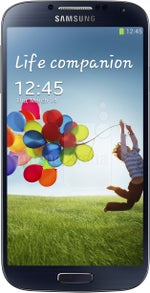








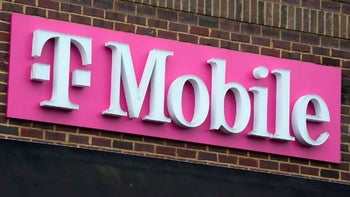
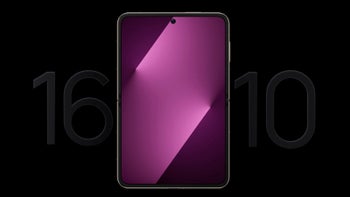
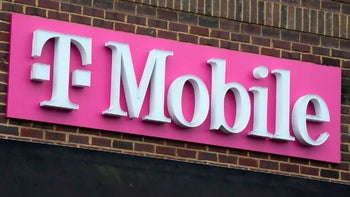
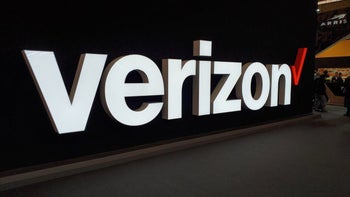


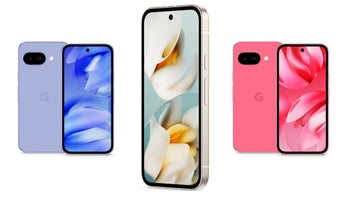
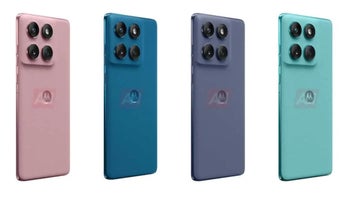
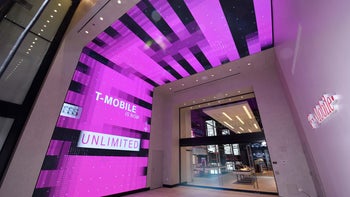
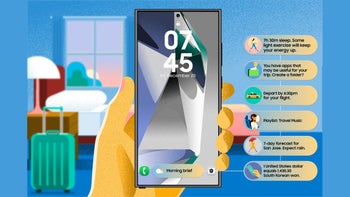

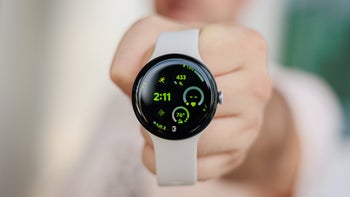






Things that are NOT allowed: